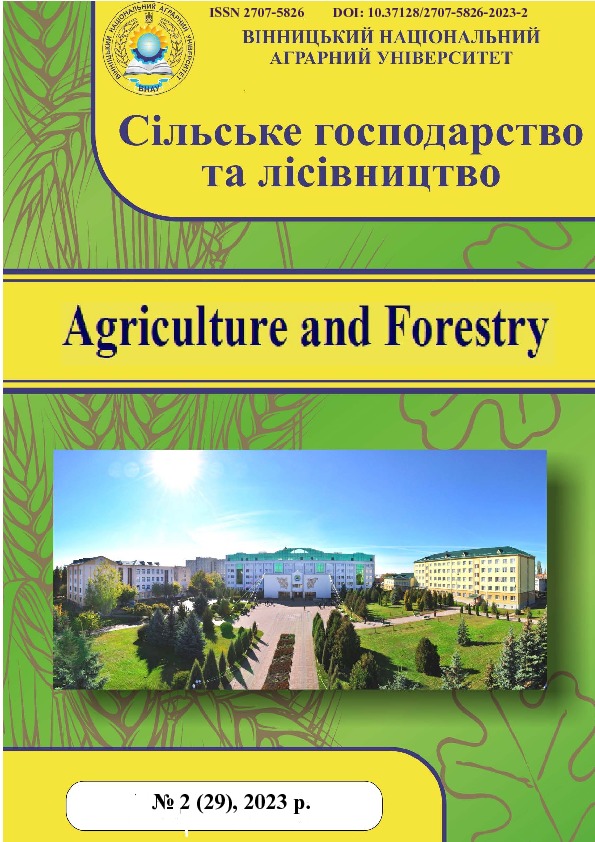id: 33839
Назва: Formation of bushiness of spring triticale varieties depending on the predecessor and fertilizer
Автори: Pelekh L., Zabarnyi O.
Ключові слова: variety, spring triticale, agrocenosis, predecessor, doses of mineral fertilizers, bushiness
Дата публікації: 2023-10-03 12:14:08
Останні зміни: 2023-10-03 12:14:08
Рік видання: 2023
Аннотація: The article highlights the influence of precursors and levels of mineral fertilization on the formation of productive bushiness of spring triticale of different varieties. Depending on the influence of meteorological factors and weather, the influence of the studied elements of winter triticale cultivation technology, the indicators of the level of bushiness changed. The highest productive bushiness was formed by plants in the variants in which the best conditions were created for this. Triticale is an artificially bred crop that has not been studied enough in the global economy and requires research, but in Ukraine it is a well-known crop that takes its share in the overall crop structure. For example, the use of different norms of nitrogen fertilizers on the background of P60К60 contributed to an increase in the number of productive stems per unit area, and, accordingly, in the productive bushiness in general. When applying phosphorus and potassium fertilizers (P60К60), the number of productive stems did not exceed 585-591 pcs./m2, and the productive bushiness was 1.58-1.59, respectively. Triticale consumes a lot of nutrients from the soil to form a crop, which requires additional fertilization. It is not customary to apply organic fertilizers to this crop. only under its predecessors. Depending on the soil fertility, 60 to 90 kg of nitrogen, phosphorus and potassium are applied. Phosphorus and potash fertilizers are scattered under the main cultivation. And nitrogen fertilizers are divided into three fertilizing sessions during the phases of active plant growth. Experts also advise to apply superphosphate 10-15 kilograms per hectare during sowing with seeds. Triticale is very sensitive to sowing dates, which roughly coincide with the middle of the optimal sowing period for winter wheat. For sowing, it is necessary to select seeds with a germination rate of at least 92% and a purity of at least 98%. Treatment with compositions designed for winter wheat has a good effect on the yield. In most farms, the crop is sown using intensive technology in a row with the skipping of technological paths. Some farms use a cross-row or narrow-row sowing method. The seeding rate is usually between 1.5 and 5.5 million germinating grains per hectare. The recommended sowing depth is 4-6 cm, reduced on heavy soils and increased by 1-2 cm on light soils. By selecting the best predecessors, namely soybeans, sunflower and corn, we created optimal conditions for the productivity of this crop. In addition, mineral fertilizers had a positive effect on the formation of bushiness of spring triticale.
URI: http://repository.vsau.org/repository/getfile.php/33839.pdf
Тип виданя: Статті у наукових фахових виданнях України (Copernicus та інші)
Видавництво: Сільське господарство та лісівництво. 2023. № 2 (29). С. 18-31. DOI: 10.37128/2707-5826-2023-2-2
Розташовується в колекціях :
Ким внесений: Адміністратор
Файл : 33839.pdf Розмір : 1090906 байт Формат : Adobe PDF Доступ : Загально доступний

| |
|
|